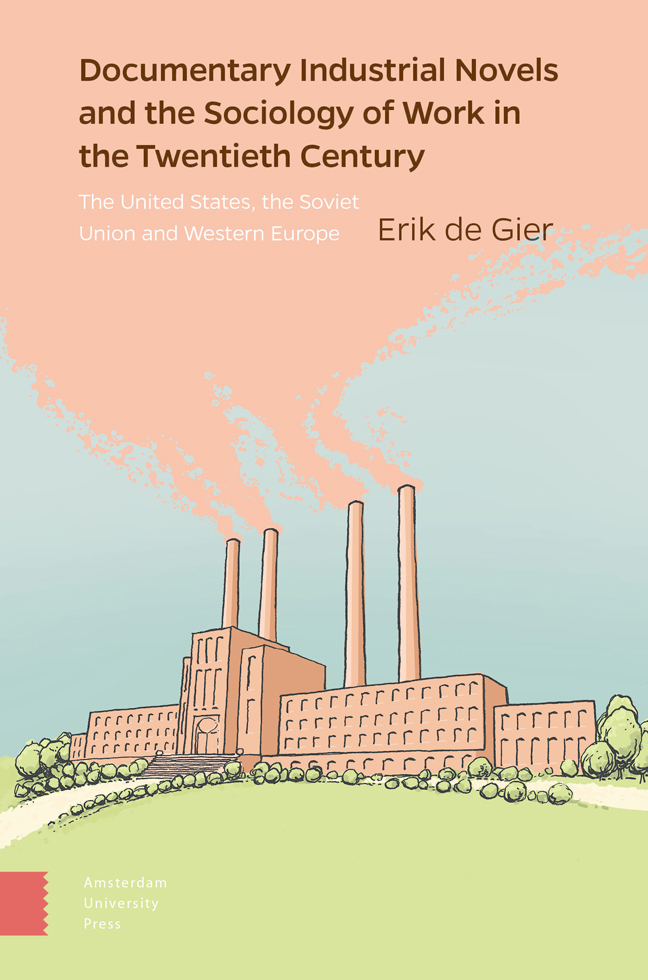 Documentary Industrial Novels and the Sociology of Work in the Twentieth Century
Documentary Industrial Novels and the Sociology of Work in the Twentieth Century Book contents
- Frontmatter
- Contents
- Acknowledgements
- Preface
- Note on sources
- 1 Bringing together the fields of sociology and literature: Towards an integration of Modernist industrial novels into industrial sociology
- 2 The rise of welfare work capitalism and the Americanization of production processes in the United States, Western Europe, and the Soviet Union
- 3 Between ‘utopia’ and ‘dystopia’: American 20th-century industrial novels
- 4 Socialist-realist industrial novels in the Leninist and Stalinist Soviet Union in the 1920s and 1930s
- 5 New Objectivity industrial novels in Weimar Germany
- 6 Neo-realist industrial novels in post-war Italy: The Olivetti case
- 7 Simone Weil and Modernist industrial novels in France
- 8 Transnational comparison and concluding reflection
- Bibliography
- Index
Preface
Published online by Cambridge University Press: 20 February 2024
- Frontmatter
- Contents
- Acknowledgements
- Preface
- Note on sources
- 1 Bringing together the fields of sociology and literature: Towards an integration of Modernist industrial novels into industrial sociology
- 2 The rise of welfare work capitalism and the Americanization of production processes in the United States, Western Europe, and the Soviet Union
- 3 Between ‘utopia’ and ‘dystopia’: American 20th-century industrial novels
- 4 Socialist-realist industrial novels in the Leninist and Stalinist Soviet Union in the 1920s and 1930s
- 5 New Objectivity industrial novels in Weimar Germany
- 6 Neo-realist industrial novels in post-war Italy: The Olivetti case
- 7 Simone Weil and Modernist industrial novels in France
- 8 Transnational comparison and concluding reflection
- Bibliography
- Index
Summary
The idea for this study was born while writing a book on capitalist workingmen's paradises in different countries in the golden age of capitalism. That book was published in 2016 by Amsterdam University Press (AUP) (De Gier, 2016). In the golden age of capitalism, generally spanning the decades between 1880–1930, major fiction writers also dealt with welfare capitalism in industrial novels in these countries. Well-known examples include Charles Dickens's Hard Times (first published in 1854) in Great Britain and Émile Zola's Germinal (first published in 1885) in France (Dickens, 1854/1993; Zola, 1885/1991). In the same context, it was obvious that the writing of industrial novels continued in modern times, after the turn of the 19th century. In literary writing naturalism was succeeded by realism. In general, this implied more systematic attention by authors to reinforcing the empirical underpinnings of these novels. For this reason, the distinction between realist or modernist industrial novels and academic sociology blurred to some extent. Nevertheless, until today industrial sociology has neglected entirely the twentieth-century industrial novel as a meaningful research source. This book tries to bridge that gap. It is based largely on synthesizing and analysing a significant number of 20th-century modernist industrial novels in five countries. All these novels are based on empirical fundamentals, and will be compared in successive time periods, from about 1900 until today. Any remaining omissions and inaccuracies in the book remain the author's responsibility.
- Type
- Chapter
- Information
- Documentary Industrial Novels and the Sociology of Work in the Twentieth CenturyThe United States, the Soviet Union and Western Europe, pp. 11 - 12Publisher: Amsterdam University PressPrint publication year: 2023
